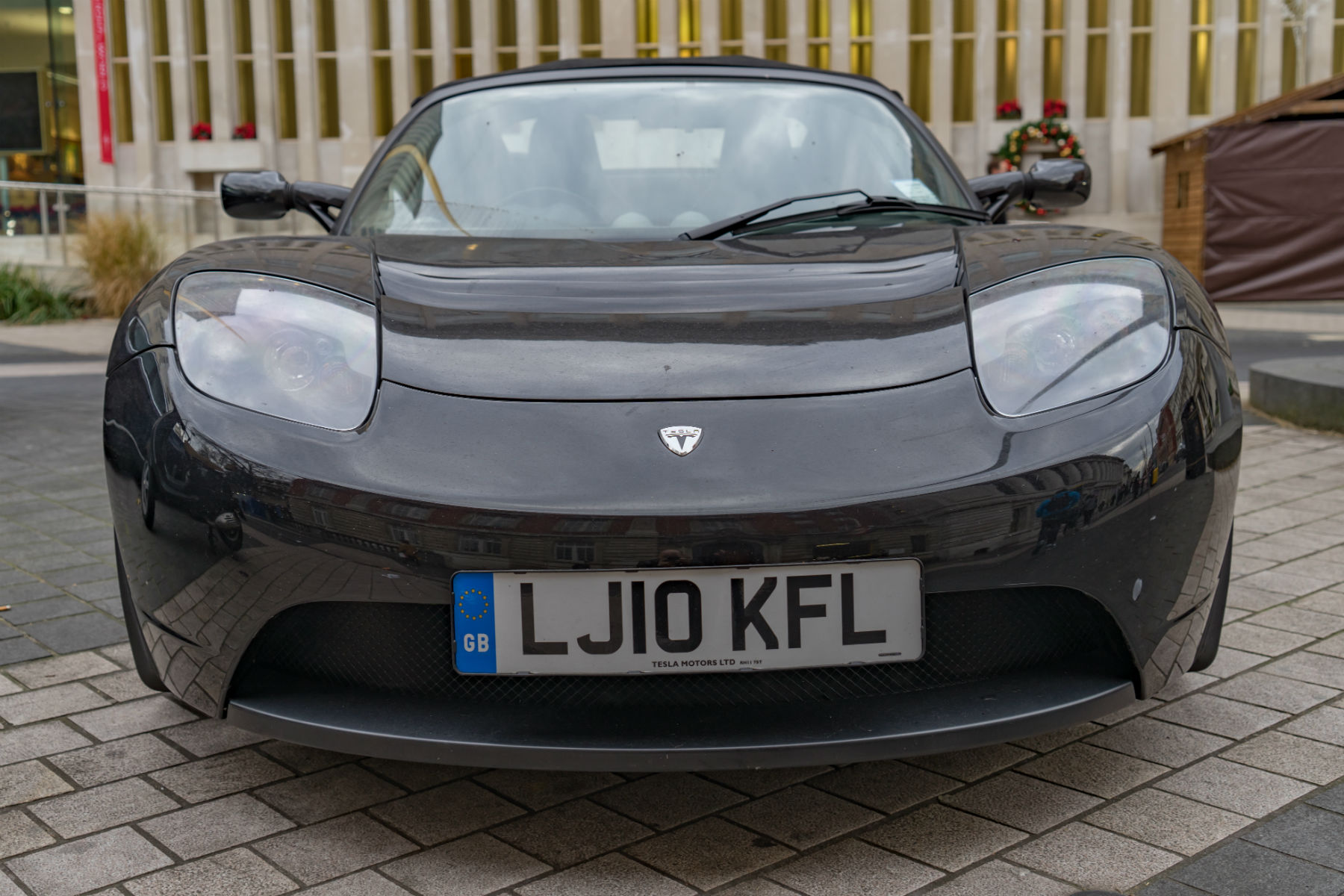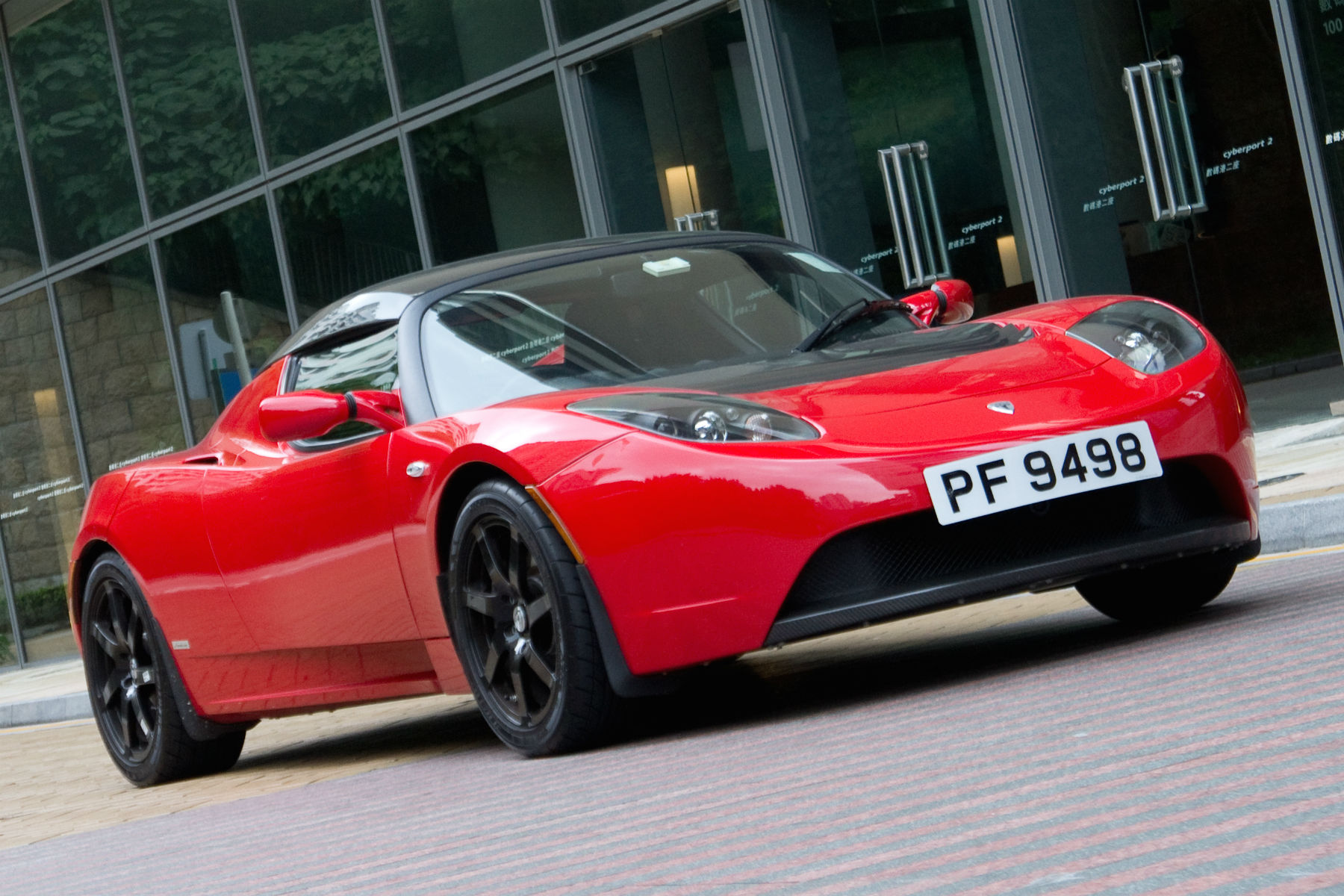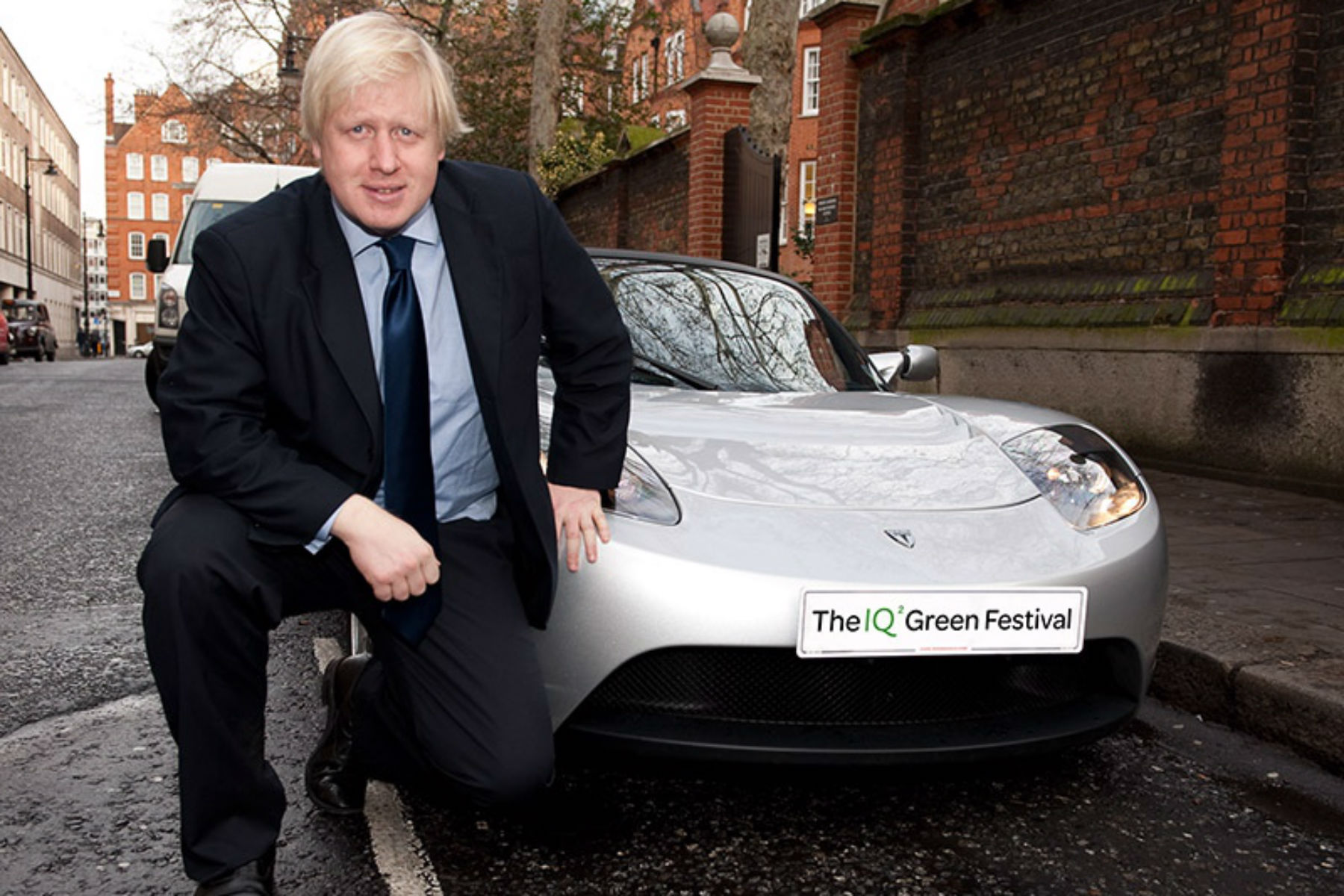Last year, the Tesla Model 3 was Britain’s second best-selling car – beaten only by the Vauxhall Corsa. It represents a meteoric rise for a company that, little more than a decade ago, was still producing a rebodied Lotus Elise. We’ve raided the Retro Motor archives for this review of the original Tesla Roadster, first written for Performance Car magazine in 2009. The first electric production car capable of more than 200 miles, it sold in very small numbers. How times have changed…
Electric motoring is not for those terrified by the sound of silence. Gone is your V8 blare, your straight-six growl, replaced by, well, a faint whine. A distant hum. There’s nothing to report on how an electric ‘engine’ sounds. It doesn’t. Surely that’s missing half the fun of a performance car? Well, hang on. Think of the alternative.
The ‘green’ diesel supercar. It fills enthusiasts with dread. Sure, we buy TDIs, i-DTECs and CDTis as our everyday cars. But really, who’s going to idolise a poster of a Ferrari JTDm? Will Mark Hales ever record Into The Rev-Restricted Red to support his words on the most iconic diesel machines? Does Nick Mason even own a classic oil-burner? And judging by the noise at BTCC meetings, or at Le Mans, would car nuts want to buy it?

No, for petrolheads, diesel isn’t the prettiest path to environmental righteousness. But we do need one. It’s a valid point that supercars’ impact on global warming is invisible. Ferraris saving fuel is going to change the situation of dwindling oil supplies not one jot. Nevertheless, fuel will, soon, either run out or become both economically and ethically unviable. Then what? It’ll be no good proclaiming single-mpg petrol is the only way then. No, we need to find an alternative for our supercar thrills, one that doesn’t involve refined chip fat. Tesla may just have it.
The Tesla Roadster is something of intrigue. We know it’s a bedfellow of the Lotus Elise. But until now, nobody’s got their hands on one in the UK. That’s why I was buzzing like a dodgy transformer to be standing in central London with the keys to a pre-production Roadster.
Head-spinning speed
I’d already been briefed and my head was spinning. An electric car’s spec sheet is certainly different. Top speed of the Roadster is limited to 125mph; an issue for track-dayers, but not on the road. Zero to 60mph, though? 3.9secs, or supercar-fast. It’ll do a quarter mile in 12.9secs, too. That’s made possible through 280lb ft of torque at, well, zero rpm. Electric motors’ maximum twist action is there right away, which makes it fortunate that Tesla has fitted traction control.
It rotates at up to 14,000rpm – which means you still get a rev counter in the dash. And it operates at 87 per cent efficiency, which is something regular combustion engines can only dream of. Further losses are saved by the use of a single-speed gearbox. Don’t worry about big servicing bills here: it’s all dead simple. Compare, if you will, to the complexity of even a basic Porsche 911.
The 250hp AC three-phase induction motor, mounted between the rear wheels, is a bespoke design controlled by a Power Electronics Module – that’s the bit you can see when the wobbly rear panel back-hinges up. This contains the DC-AC inverter and charger. There’s no regenerative braking, but lifting off the throttle turns motor into generator, putting up to 100amps back into the batteries.
Ah, the batteries. Here’s the really clever part. They’re lithium-ion, meaning, at last, mobile phone batteries have come to cars. Consider their composition in three levels: there are individual cells, a bit like AA batteries, and 621 are used to form a single sheet. For a truly modular design, 11 are then gathered together to form the battery pack. It punches out 53kWh and is guaranteed for 100,000 miles. Tesla has prioritised longevity and power output.

The trick to making lithium-ion batteries that don’t catch fire is managing the energy, ensuring they don’t become too hot or cold, avoiding lithium ‘flare’. The battery pack is even air-conditioned, all as part of the Tesla’s thermal management. This massively complicated software is Tesla’s own IP; each sheet has its own ECU, as well as an overall battery pack ECU, which has sensors for pressure, inversion, smoke, accelerometers, temperature and so on.
Finally, I blink into the sunlight. First impressions? Elise. It shares the same windscreen and dimensions, but while every (carbon fibre) panel is different, the profile, stance, height and dimensions are familiar. Not that this is a bad thing – and besides, it does look different.
It seems much like what a start-up company’s first sports car would resemble. No classic, heavily influenced by others, but certainly enough to have passing cyclists shouting “nice car, mate”. The air inlets on the rear wings are pure Ferrari F430 (that’s what you think each time you spy them in the door mirrors), as are the lights and rear buttresses. Spot the cues elsewhere.
Overall, it’s very American and a bit soft, but not inoffensive – and that’s vital when you think of how significant this car is. It needs to be an electric car flag-bearer. And if most of the population think it pig-ugly, flags will soon be at half-mast.
The cockpit is like the Elise. The same massive sills, same dashboard, but a nicer, swoopier centre console and full carpeting. Dials are similar, but next to the driver’s knee is a touchscreen display. It’s for PIN security, and to monitor the power management of the car. There is even a ‘fuel saved’ meter. Enter the mpg of your other car and Tesla will tell you how many barrels of oil you haven’t consumed.
A smooth operator
Turn the key and nothing happens, of course. Save for a ‘wake-up’ bleep, a bit like a computer starting up, that signals you’re ready. Select Drive, release the handbrake, then things become very different.
David Attenborough often films weird sea creatures, motionless, which suddenly spear along at comet-like speed in an unfeasible flash. That’s what accelerating in a Tesla for the first time is like. Leaving you suddenly travelling at serious speed in central London, seemingly in silence, completely at a loss as to what’s going on. Totally baffling. No noise, no vibration, no gearchanges, no sensations – just a delirious rush, like being on a rollercoaster.
This is electric ‘go’. It’s soon apparent the switch-like intensity of response to the throttle, and the ensuing reaction, defines the Tesla. It is, I’d imagine, like an F1 car. You hear it on Lewis Hamilton’s in-camera shots through bends: when he’s back on power, it’s a digital, zero-to-one effect, no fluff or faff. Accelerator response is incredibly clean and crisp, and proportional, like very few combustion engines. Like broadband, it’s always on. The mid-range response is just sensational.

Don’t forget, there are no gear changes either. Just total linearity. The same sustained rush from zero to speed X. Alien? Totally. Such alacrity infuses the rest of the car, too.
Initial dynamic impressions are of familiar Elise-like steering precision and delicacy, firm and lag-free response, a more supple and compliant setup, perhaps – but with a newfound trick: the best throttle-adjustability ever. Going on the power delivers so much force, which can be varied and modulated with unheralded precision and immediacy. It becomes a rear-driver you treat like a front-driver.
This is a hi-tech feel, very futuristic. Besides, as there is no engine to connect with, your emotional hook is even more linked to the chassis. You hone in on it with added intensity.
Mind you, something else felt is the cleanliness of the drive. Not just in the obvious sense – but, in lacking oily bits, somehow it becomes easier to grasp and feel. All the complexity has been stripped back, meaning you just get in and drive. It’s like an iPod. They have no instruction book; with this, I got in, was told about the start-up procedure by a sandwich-munching Tesla man, and was away, feeling like a hero. More simple it could not be.
Nor more thrilling. It gives the same tight feelings in your stomach as, again, a rollercoaster – such is the intensity of acceleration, the G-laden forces from cornering. It’s as if the electromagnetic impulses are being fed into you. It’s a sports car like no other.
Noises off
And no noise? Here’s the elephant in the corner. Still, what is noise but waste? Why do racing car drivers wear earplugs? If you’re really on it, wouldn’t one less distraction be welcome? Great engines sound magic, but did I miss one here? No – because the rest of the car was feeding me so much more. And isn’t driving about tactile sensations?
The debate, I know, will run. But our time was limited. Oh right, because of the driving range? No – they reckon well over 200 miles. Sports cars, they say, rarely do more in a day, and such a range for something hitting 60mph in less than four seconds is pretty blistering. They’re some batteries indeed – the ‘fuel gauge’ was still three-quarters full when I brought it back. Battery cooling fans zizzing like a hard-worked PC, I exited the Tesla, bewildered but still buzzing. If this is the future, bring it on.
For £92,000 (make that two elephants), you can take delivery next May, of a 100-run European launch special, with custom leather, a bespoke paint colour (any DuPont hue) and other goodies. The series model will be around £88,000. If you’re an entrepreneur with a clean tech fund, or a supercar fan with a conscience, you’ll be right there, say the bosses. Buying into the world’s first ecologically sustainable performance machine.
Common sense says £92,000 is a massive amount to pay for an Elise with doors that clang shut. But is Aston Martin V8 money really that boggling for what could be the most significant performance car in years? That’s how utterly convincing the Tesla seems.
Also, it doesn’t sound like a diesel. I think it might be time to make some noise.
The story of Nikola Tesla

Nikola Tesla started the second industrial revolution by inventing the AC electric motor. Apparently, he’s known as the patron saint of modern electricity. His genius is not required to guess which stall Tesla Motor is setting itself out upon.
It all started in 2003, with a true Silicon Valley start-up. Co-founder Martin Eberhard had made his fortune and wanted a sports car to spend it on. But he’s an environmentalist, and was uneasy about the idea of a thirsty Italian supercar, or similar. Luckily, he was rich. “I can build the car I want,” he mused.
And he did. The rest followed through a mixing of minds, very much right-time and right-place. “In Silicon Valley, if it’s a great idea, you can attract capital. It celebrates entrepreneurialism,” explained Tesla Europe marketing manager, Aaron Platshon. Further cash, for example, came from Elon Musk, the founder of PayPal.
The company’s roots are in consumer electronics, not cars. This gave it a wealth of experience in lithium-ion battery technology: “We understood that the batteries give massive energy density – so long as you know how to control and package it.” The automotive expertise? Expert recruitment bought it on board.
“Our worst-case scenario will be that we’re acquired. But we don’t intend for that to happen.” Instead, Tesla wants, by 2010, to make 20,000 BMW 5 Series rivals a year – a five-door hatchback developed by itself, using suspension and other components from major manufacturers, but produced in-house.
Tesla has been run for the past five years on $150m, and reckons it will cost $200m to get this sedan into production. That is not a lot by modern car standards. “We call upon automotive expertise from specialists, but we’re also a Silicon Valley company. We do things more cheaply.” Access to further funds, should they be required, is not an issue.
After that, there will be a smaller, more mainstream car. All using Tesla’s ingenious and uber-efficient powertrain. We’re not talking millions of cars a year, but enough. No, the mega volumes may come from Tesla licensing its drivetrain to other manufacturers.
So groundbreaking is the performance of the Roadster, other supercar manufacturers simply have to take it seriously. And, if the idea of an electric Scuderia really switches Ferrari on, Tesla will consult. This is where the money will be made.
Nikola Tesla was derided as a mad scientist in the 19th century. Now, Tesla Motors is suffering the same. An electric performance car? Bonkers. And maybe just as revolutionary.
ALSO READ:
Nissan UK celebrates 35 years with restomod electric Bluebird



[…] From the archive: Tesla Roadster review […]